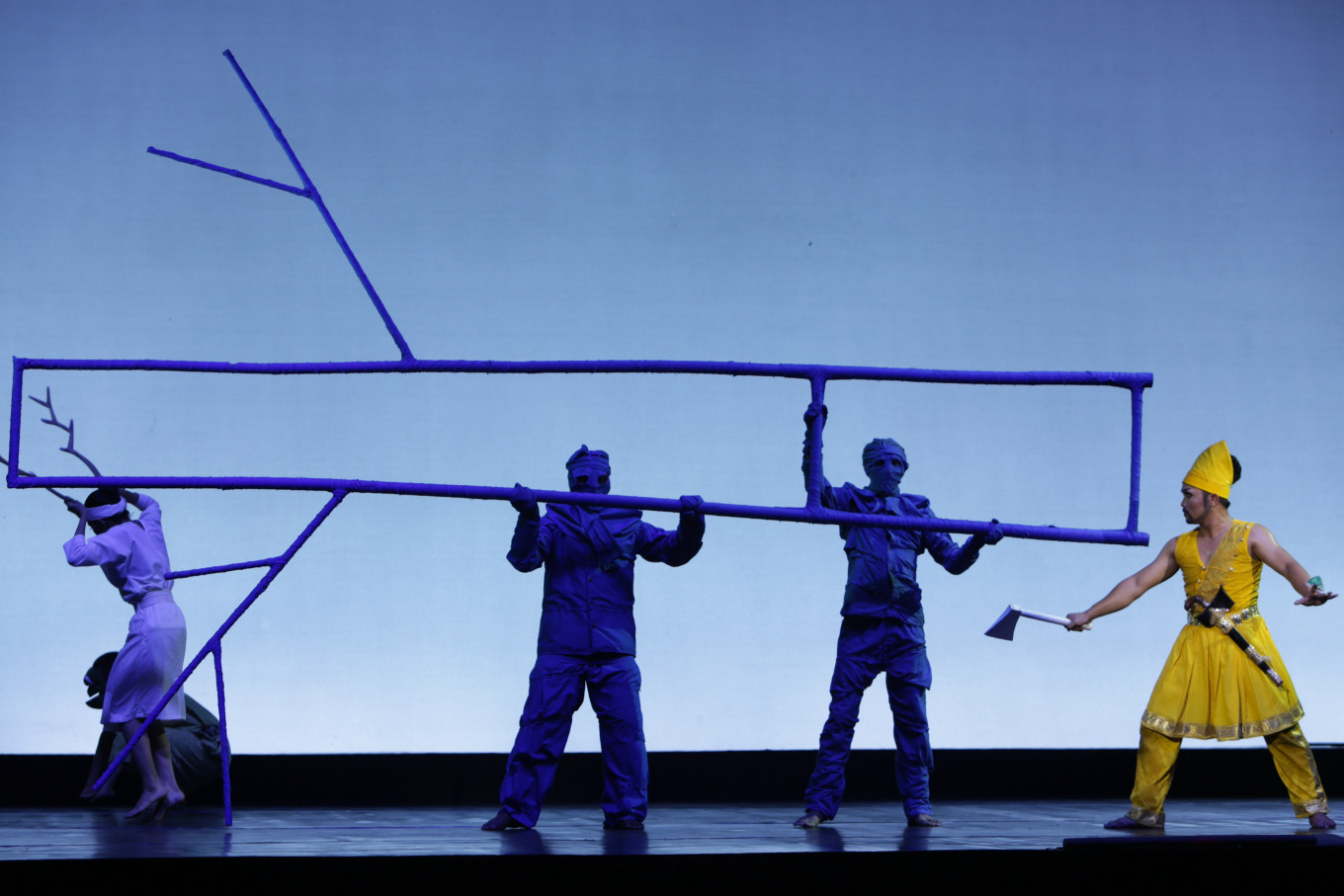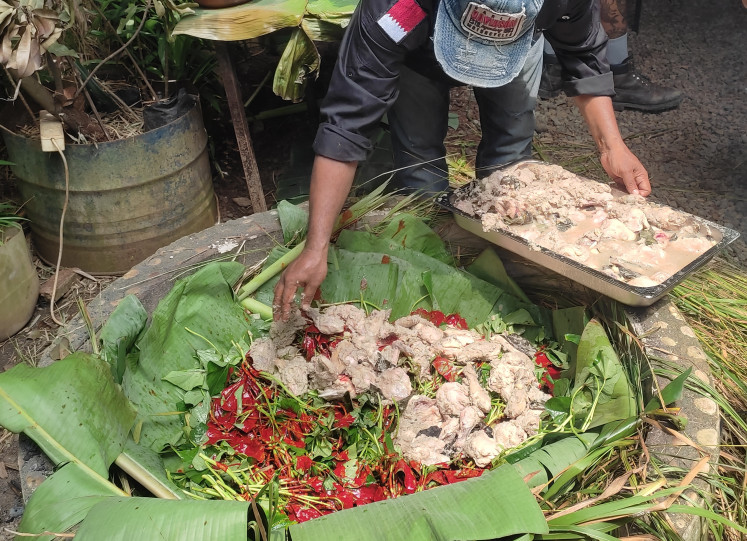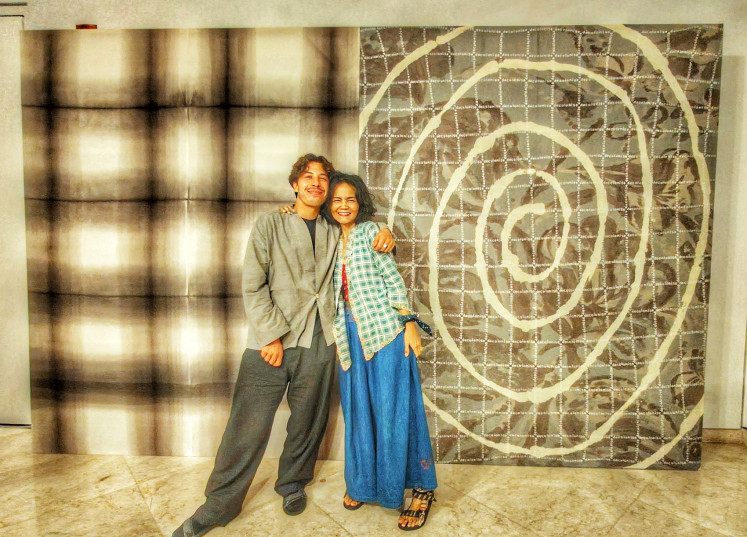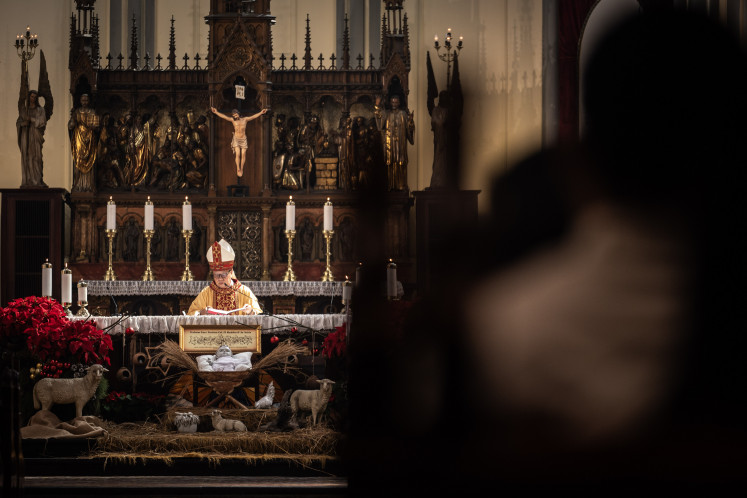Popular Reads
Top Results
Can't find what you're looking for?
View all search resultsPopular Reads
Top Results
Can't find what you're looking for?
View all search resultsBehind the stage: 5 facts you need to know about 'I La Galigo' before watching
Debuting in 2003 at the Esplanade Theaters on the Bay, Singapore, I La Galigo has made its rounds all over the world and, for the first time in over 15 years, returns to Indonesia for performances at the Ciputra Artpeneur on July 3, 5, 6 and 7.
Change text size
Gift Premium Articles
to Anyone
I La Galigo is a world-class musical theater production adapted from the Southern Sulawesi Bugis epic Sureq Galigo.
Debuting in 2003 at the Esplanade Theaters on the Bay, Singapore, the production has made its rounds all over the world and, for the first time in over 15 years, returns to Indonesia for performances at the Ciputra Artpeneur on July 3, 5, 6 and 7.
Through a press release, the team working to create I La Galigo gave us a look into the production of the show. So, before you go to watch it, here are five interesting facts about the inner workings of I La Galigo.
I La Galigo is an international and polylingual production
Though the story of I La Galigo is based on an Indonesian epic, the team behind it is made up of talents from all over the globe.
The production’s actors, musicians and stage crew hail from all over Indonesia, including provinces in Papua, Sulawesi, Bali and Java. Meanwhile, members of the creative team are an international mix, originating from the United States, Italy, France, Canada, Singapore and Indonesia itself.
This diversity comes with its own complications, as cast members often communicate in different languages. At times, this can result in miscommunication backstage, but the team always makes sure the show goes on – though a compensation of pizza to share is expected.
The play uses a metric ton of costumes and props
In total the production uses nearly 300 costumes and over 200 props for the entirety of its runtime – if you piled all these materials together, you’d get something that weighs nearly a ton.
Backstage, the team must constantly organize, maintain and clean these props and costumes so they’re ready for use when the scene calls for it.
The scenery backstage is described as a “giant bazaar” as clothing and set pieces are lined up, with the stage crew awaiting their cues to cart them onstage. Making the transitions seamless is difficult due to time constraints. In some cases, the wardrobe team even needs to dress a performer in just about 20 seconds until they reemerge onto the stage for a different scene.
Alum powder keeps the costumes fresh
I La Galigo is a physically demanding performance, with its actors constantly moving and working up a sweat. Because of this, the issue of sweat and body odor is a concern.
The wardrobe team solved this issue with tawas (alum powder), which is used liberally on the actors as a sort of antiprecipitant before the performance to make sure none of the costumes smell after – this also removes the need for deep cleaning.
Instruments were completely reinvented
Since the production has been staged in many countries over the past 15 years, transporting heavy instruments from one location to the next has proven to be a logistical challenge.
To tackle this issue, I La Galigo’s music composer Rahayu Supanggah said he had to “reinvent” certain bulky instruments.
One example is the gong – a typically large circular metal disc that’s nearly impossible for one person to carry alone. Supanggah created a thinner version of the gong that is easier to transport without sacrificing the quality of the sound.
Read also: National treasure ‘I La Galigo’ to grace Jakartan stage in July
Communication flows between crew, audience and Bugis ancestors
In most productions, the performance conveyed to the audience is a product of the director communicating their vision, but the nature of I La Galigo’s source material changes that.
Sureq Galigo is an epic of the Bugis that was written down as holy scripture sometime between the 18th and 20th centuries based on oral tradition. The text is rich in history and spiritual meaning; therefore preserving the will and traditions of the Bugis ancestors is integral to honoring the story and its culture.
To justifiably convey the story through theater, the crew must consult professionals who can reliably communicate the oral accounts and scripture.
The late Puang Matoa Saidi lead the crew in this respect until 2011. He said the most important thing he did while preparing for I La Galigo was to ensure that what had been passed down to him by ancestors was followed in its entirety, like how the ceremony should be performed and what hymns are to be sung at a given time.
“I have a responsibility to ensure the performance mirrors our traditions,” he was quoted as saying. (ayr/mut)
Your Opinion Matters
Share your experiences, suggestions, and any issues you've encountered on The Jakarta Post. We're here to listen.
Thank you
Thank you for sharing your thoughts. We appreciate your feedback.











